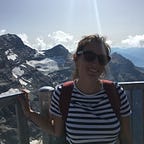Inspired by a Twitter bookclub started by Jessica J. Lee (#AlliesInTheLandscape) I started a small reading club on climate justice, to reflect on how race shapes our outdoors experiences.
In the past 2 months, our focus was on understanding and our readings were:
- Black Faces, White Spaces: Reimagining the Relationship of African Americans to the Great Outdoors by Carolyn Finney
- This short excerpt from How to be Anti-Racist by Ibram X. Kandi
Black Faces, White Spaces explores why African Americans are underrepresented when it comes to environmental organisations, outdoor activities and recreation in the United States.
Carolyn Finney looks at cultural studies, critical race and gender relations, ethnography and geography to show how legacies such as Jim Crow laws, slavery and racial violence have all shaped our own understanding of nature and outdoors.
The author discusses how the power of memory shapes our interactions with the environment. Acts of terror are remembered, both for the place where it happened and the act itself. For many, the disconnect to some outdoors spaces or places is linked to the collective memory of Black people and individual memories of personal experience.
The book shows that it is difficult for African Americans to have an uncomplicated relationship with nature. The racialised experiences of nature were systemically mediated by institutions, policies, social norms. Our environmental narrative lacks consideration of the historical lineage of pain and prejudice experienced by Black people.
Environment organisations are primarily white and middle class. A study in 1975 in American showed that 98% of environmental volunteers are white was cited by the author. UK figures have shown similar numbers in recent years. The Equaliy Trust shows that in 2018, 3.1% of environment professionals identify as non-white minorities (report here).
This year the Sierra Club apologised for the racist and white supremacist remarks by club founder John Muir — comments he made more than a century ago.
These White people legacies are also perpetuated by popular media. Simple things like postcards — can you remember the last time you saw a postcard of outdoors with a Black person or a Person of Colour? Ingrid Pollard wrote how she feels about visiting the Lake District:
“… it’s as if the black experience is only ever lived within an urban environment. I thought I liked the Lake District; where I wandered lonely as a black face in a sea of white. A visit to the countryside is always accompanied by a feeling of unease; dread.”
White environmental organisations need to prioritise working on anti-racism from the inside and learn how to make anti-racist policies. As Ibram X. Kendi states, do-nothing policies are racist policies, as non-white global south is a victim of climate change more than the whiter global north. Our ultimate goal should not be integration but equity and equality.
The above text was written for the Young Geographer magazine. Thanks to fellow book pals Alex and Lucy for the edits on this post.
For any likes, retweets and engagement on this article, I’ll be donating money to: Black Girls Hike providing safe space for Black women to enjoy outdoors and Wild in the City who are raising funds to support their Nature Guides programme that trains people of colour to lead in nature.
